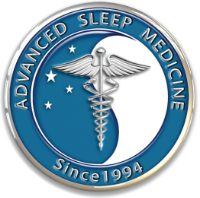 Research shows that men treated with continuous positive airway pressure (CPAP) for obstructive sleep apnea-hypopnea are at a much lower risk for both fatal and non-fatal cardiovascular events than their untreated peers.
Research shows that men treated with continuous positive airway pressure (CPAP) for obstructive sleep apnea-hypopnea are at a much lower risk for both fatal and non-fatal cardiovascular events than their untreated peers.
Endpoints [of the study] were fatal cardiovascular events (death from myocardial infarction or stroke) and non-fatal cardiovascular events (non-fatal myocardial infarction, non-fatal stroke, coronary artery bypass surgery, and percutaneous transluminal coronary angiography).
Who participated in the study and how were they monitored?
The research, conducted over the course of ten years, observed:
- 264 healthy men
- 377 simple snorers
- 403 men with untreated mild-moderate obstructive sleep apnea-hypopnea
- 235 men with untreated severe disease
- 372 men with the disease and treated with CPAP.
Presence and severity of apnea in the population was determined by full polysomnography.
The patients to be treated were prescribed over 4 hours of CPAP daily. Treatment compliance was overseen through a built-in meter in the machines. The untreated patients were advised to lose weight, quit smoking, alcohol and sedatives and avoid sleep deprivation.
All men made annual visits to the clinic for assessment.
What were the results?
The correlation of apnea treatment and reduction of cardiovascular risks is astounding, and clearly shows the benefit of CPAP.
The death rate by heart problems in relation to population group was 10.6% for untreated patients with severe apnea and 5.5% for men with untreated mild condition, compared to 3.5% for treated patients, 3.5% for simple snorers and 3.0% for healthy men.

Percentage of non-fatal cardiovascular events was just as compelling: 21.3% for untreated severe condition patients, 8.9% for men with untreated mild condition, compared to 4.5% for healthy population, 5.8% for snorers and 6.5% for the treated condition group.

Why didn’t every participant treat his apnea?
Interestingly, 36% of the patients with severe disease refused the CPAP treatment. This group continued to be observed for natural course of untreated apnea.
The refusal of treatment can be explained by the fact that the CPAP machines were inconvenient to use at the time of the beginning of study, over 10 years ago.
Today, due to improvements in technology, such as better nasal interfaces, auto-adjustments, and heated humidifiers, CPAP has become a much more comfortable procedure, while continuing to effectively improve the cardiovascular and other aspects of patients’ health.
Should women pay attention to this study?
Although the study was conducted on a solely male population and cannot be projected directly onto women due to some additional factors, the increased risk of death for men is convincing enough to assume there could be a great correlation between apnea and cardiovascular risk for women as well.
Obstructive sleep apnea-hypopnea affects 4% of middle-aged men and 2% of middle-aged women.
Treating apnea today could save your life.
Concerned that obstructive sleep apnea may be affecting your heart health? Request a sleep study!
Sources:




